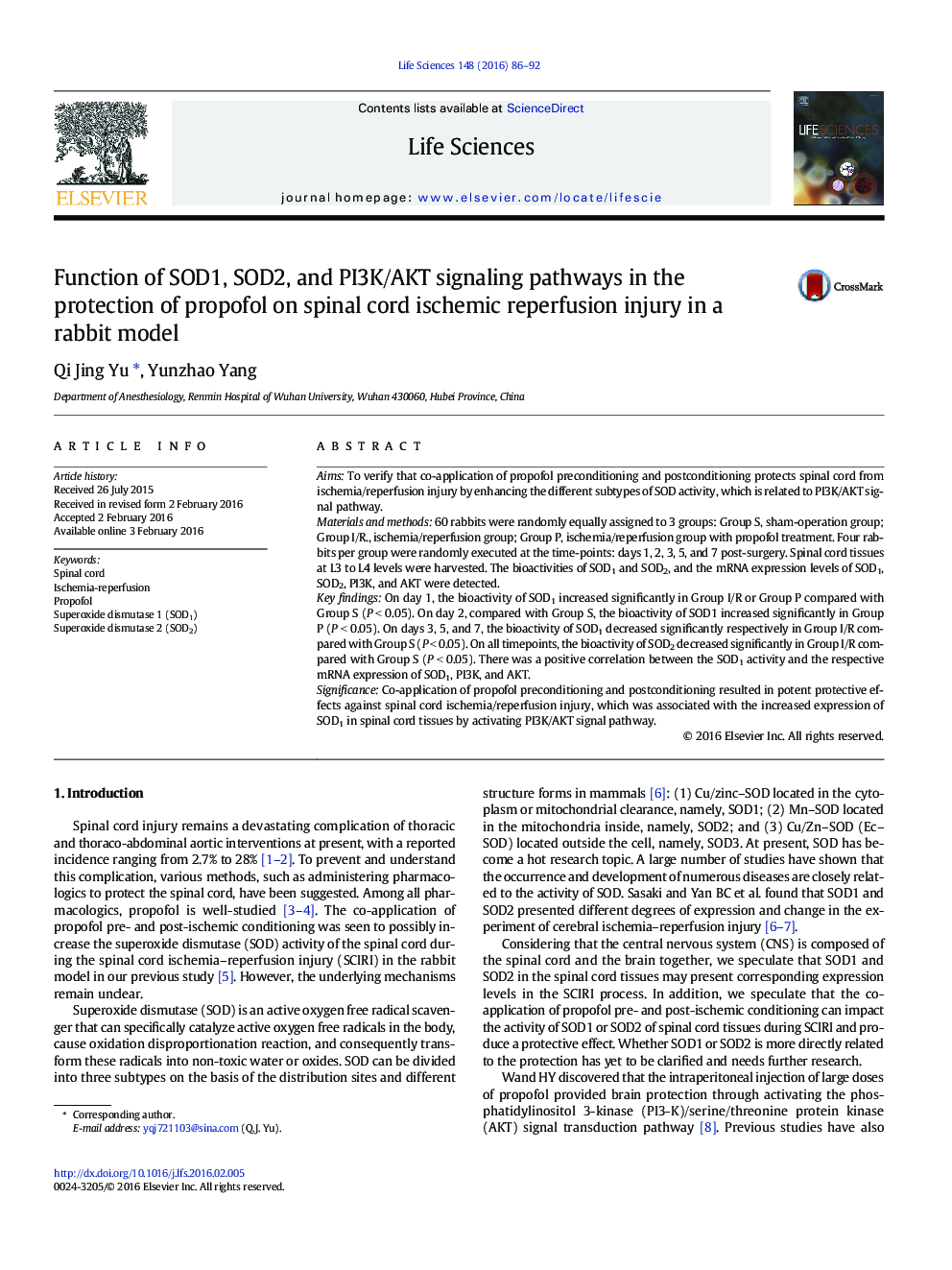| Article ID | Journal | Published Year | Pages | File Type |
|---|---|---|---|---|
| 2550739 | Life Sciences | 2016 | 7 Pages |
AimsTo verify that co-application of propofol preconditioning and postconditioning protects spinal cord from ischemia/reperfusion injury by enhancing the different subtypes of SOD activity, which is related to PI3K/AKT signal pathway.Materials and methods60 rabbits were randomly equally assigned to 3 groups: Group S, sham-operation group; Group I/R., ischemia/reperfusion group; Group P, ischemia/reperfusion group with propofol treatment. Four rabbits per group were randomly executed at the time-points: days 1, 2, 3, 5, and 7 post-surgery. Spinal cord tissues at L3 to L4 levels were harvested. The bioactivities of SOD1 and SOD2, and the mRNA expression levels of SOD1, SOD2, PI3K, and AKT were detected.Key findingsOn day 1, the bioactivity of SOD1 increased significantly in Group I/R or Group P compared with Group S (P < 0.05). On day 2, compared with Group S, the bioactivity of SOD1 increased significantly in Group P (P < 0.05). On days 3, 5, and 7, the bioactivity of SOD1 decreased significantly respectively in Group I/R compared with Group S (P < 0.05). On all timepoints, the bioactivity of SOD2 decreased significantly in Group I/R compared with Group S (P < 0.05). There was a positive correlation between the SOD1 activity and the respective mRNA expression of SOD1, PI3K, and AKT.SignificanceCo-application of propofol preconditioning and postconditioning resulted in potent protective effects against spinal cord ischemia/reperfusion injury, which was associated with the increased expression of SOD1 in spinal cord tissues by activating PI3K/AKT signal pathway.
